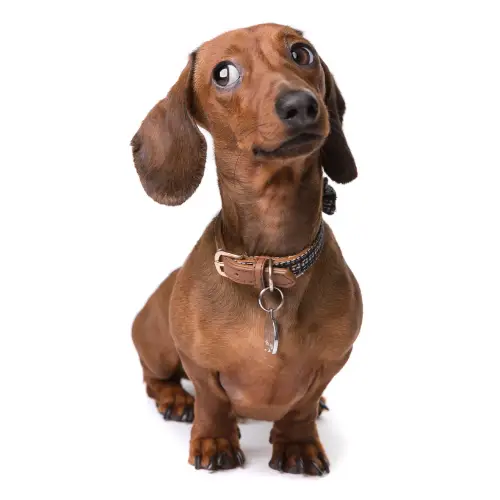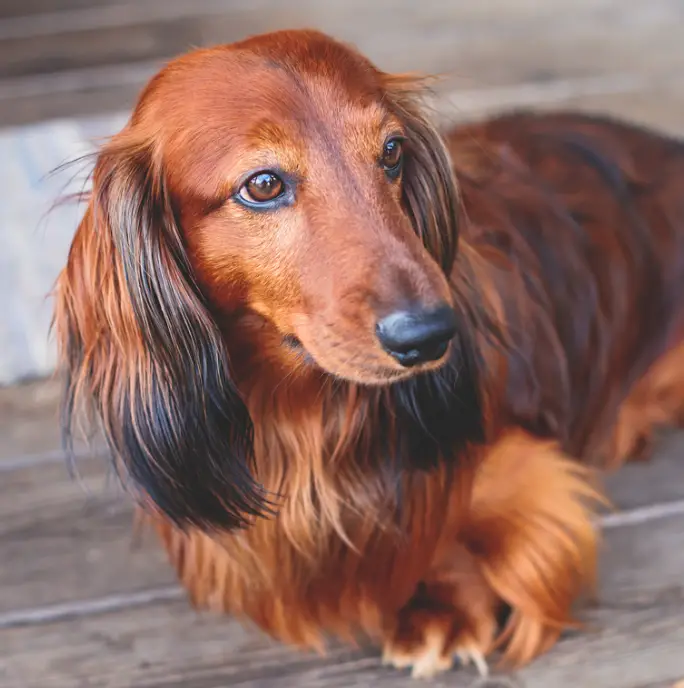Is your dachshund overweight? Want to know how to lose weight in your Dachshund? Here’s everything you need to know to help your Dachshund shed excess weight steadily and safely.
How can I help my dachshund lose weight? Take your dachshund to the veterinarian to make sure everything is fine medically. Adjust your dachshund’s diet by giving less food and replacing processed treats with fresh vegetables. Gradually increase your daily exercise over time.
Obesity not only shortens a dachshund’s lifespan, but the excess weight can put pressure on an already weak back. Find out how to help your dachshund lose weight with the best diet and exercise tips.
Do Dachshunds Get Fat Easily?
Dachshunds tend to be overweight more than other dog breeds. This is partly due to their small feet. They are not as mobile as most other breeds.
This lack of exercise can make you miss the activities you need to stay happy and healthy.
Just like humans, dogs get fat when they don’t get enough exercise. To complicate matters further, Dachshunds are prone to a few disorders that can impact their mobility.
How Much Should A Dachshund Weigh?
Dachshunds are prone to obesity, so it’s important to monitor their weight regularly. Dachshunds come in two varieties: standard and miniature.
A standard Dachshund can weigh up to 30 pounds. Miniature Dachshunds can weigh up to 11 pounds.
If your dog is over these ranges, he may be overweight. However, it’s important to stay on the scale when determining if your puppy is obese. Age, genetics, and size all play a role in determining a puppy’s weight.
A scale is a great tool for tracking whether your dog is gaining or losing weight. But it’s not very good at determining if a dog is where it should be.
It is recommended that you look at your dachshund’s body type, not just the scale.
How To Help A Dachshund Lose Weight
- Take your dachshund to the vet before starting weight loss therapy
If your dachshund has gained significant weight, the first thing you should do is take him to the veterinarian. Weight gain in Dachshunds is often due to overeating and not getting enough exercise.
However, weight gain can also be caused by castration, heart disease, tumors, parasites, hypothyroidism, high blood pressure, or certain medications.
That’s why it’s important to have your dachshund checked by a veterinarian before enrolling your dachshund in a weight loss program.
In this way, we can find out if there are underlying factors that are causing dachshunds to become overweight.
A veterinarian can also check to see if your dachshund is medically overweight and how to safely lose weight over time.
- Weigh your dachshund before starting a new weight loss program
Before weighing your dachshund, you need to weigh it.
Knowing your dachshund’s weight before you start can help you track weight loss. This way he sheds those extra pounds steadily and safely.
It also helps you monitor what’s working and what’s not working with Dachshund’s new weight loss plan! You can weigh your dachshund at your veterinarian or get your own dog scale.
- Improving your dachshund’s diet for successful weight loss
There are several ways to improve your dachshund’s diet and lose weight.
– Change your dachshund’s regular dog food
Ask your veterinarian about the types of dog food that are safe and healthy for overweight dachshunds. – Do not feed dachshunds for free. If you want your dachshund to lose weight, you need to control how much he eats each day.
– Feed your dachshund at the same time every day
Adult Dachshunds typically have breakfast between 7-8 am and dinner between 4-5 pm.
– Eat less for your dachshund
You should consult your veterinarian before reducing the amount of dog food you give your dachshund.
– Use slow-feeder dog bowls for dachshunds
Let’s face it, most Dachshunds are greedy! Therefore, using a Slow Breeder Bowl will do exactly what it says on the can, slowing down the amount of food your dachshund can eat at one time.
– Invest in a measuring cup to keep food amounts consistent
You need to make sure your dachshund is eating exactly the same amount of food in his bowl each day. – Do not feed dachshunds from the table. Do not feed your dachshund, especially from the dinner table.
– Limit snacks
Even if your dachshund eats less at mealtimes, you should also limit your dog’s treats.
– Swap treats for fresh vegetables
Instead of giving your dachshund unhealthy store-bought treats, try giving them fresh vegetables instead.
- Compliment your dachshund with affection and toys instead of food
If your dachshund is often given food and treats throughout the day, try replacing them with affection and toys.
You don’t have to do this every time. But more often than not, you can motivate your dachshund with playtime and attention instead.
You can also do this when training your dachshund. Other forms of praise that do not involve food will continue to attract the dachshund to training.
- Make sure your dachshund is getting enough exercise to help lose weight
If your dachshund is overweight, give him plenty of exercises.
An adult miniature dachshund needs at least 30 minutes of exercise daily. A standard adult Dachshund needs at least 60 minutes of exercise a day.
Therefore, be sure to incorporate short walks in the morning and evening into your dachshund’s daily exercise routine. And extend these walks each week to work on his fitness.
- Book hydrotherapy to lose weight in your dachshund
Hydrotherapy is water therapy. It is known to be a useful treatment for dachshunds in need of weight loss and severely obese dachshunds.
During hydrotherapy, the dachshund is encouraged to swim in the water and flex all muscles. Some owners may try to use toys in the water to keep their dachshund looking forward to the session.
Hydrotherapy is a useful exercise for overweight dachshunds. Because it supports your weight and is easier than regular walking or running.
- Playing games with a dachshund
Your Dachshund will surely love to play with you. They are a great way to get your Dachshund working out and also promote weight loss.
Conclusion
The two main keys to keeping your dachshund at the right weight (after confirming with your veterinarian that there are no health issues) are controlling food intake and exercise.
You can choose a weight-loss dog food to reduce calories while maintaining the same amount of food, but you don’t have to.
You can balance this extra volume with sodium-free green beans or water. Your dachshund may be fine, so you can try giving him less food.
Gradually increase the Dachshund’s movement level, but shoot at least 20% more than it currently does. Once your dachshund has reached the right weight for its size and build, you may be able to maintain your dachshund’s new fit body by eating more and exercising a little less.
However, this may cause your dachshund to regain some weight, so you may need to put it back to the same amount as before.
When your dachshund reaches its ideal weight, it feels better, moves better, and is happier.






